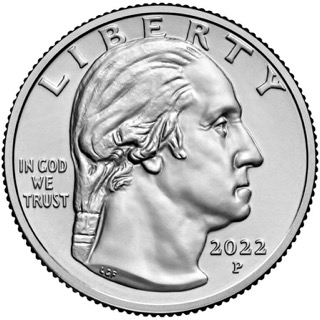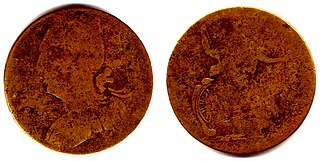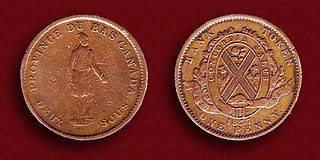
Oregon Centennial Tokens were a type of trade token (also known as a "So-Called Dollar") issued during the 1959 Oregon Centennial. Many localities sold them as a fundraiser to finance their Centennial celebrations.

Oregon Centennial Tokens were a type of trade token (also known as a "So-Called Dollar") issued during the 1959 Oregon Centennial. Many localities sold them as a fundraiser to finance their Centennial celebrations.
The Northwest Specialty Sales Co. created several prototypes and induced 38 localities to purchase the tokens. Each locality had the option of using the standard obverse and a customizable standard reverse. The standard reverse also had room for two logos around the outer rim. Each locality determined the logos that were displayed on the reverse upper and lower curvatures. The standard obverse was the official emblem of the Oregon Centennial.
The standard reverse had a center with the phrase: "Good For 50¢ in trade At any cooperative Business or Redeemable At face value at the (locality) (location) until 3 P.M. Friday Sept. 1959." There existed variations of the standard reverse phrasing between localities but this one was the most common.
The tokens range in size from 32 to 40 millimeters in diameter. Different metal compositions were used by the manufacturer of the tokens. Each locality had the option of which type or types of metal composition to use in production. Some localities created limited versions using different metals than their standard versions. These different versions were used as awards, gifts, or special mementos for dignitaries.

A coin is a small object, usually round and flat, used primarily as a medium of exchange or legal tender. They are standardized in weight, and produced in large quantities at a mint in order to facilitate trade. They are most often issued by a government. Coins often have images, numerals, or text on them. The faces of coins or medals are sometimes called the obverse and the reverse, referring to the front and back sides, respectively. The obverse of a coin is commonly called heads, because it often depicts the head of a prominent person, and the reverse is known as tails.

The quarter, short for quarter dollar, is a United States coin worth 25 cents, one-quarter of a dollar. The coin sports the profile of George Washington on its obverse, and after 1998 its reverse design has changed frequently. It has been produced on and off since 1796 and consistently since 1831.
Mint-made errors are errors during the minting process. Groups of coins with distinctive characteristics are known as varieties. The term variety applies to coins with both intended and unintended differences while the term error refers only to coins with unintended differences. Nevertheless, not all errors are varieties. Although there may be many identical examples of some errors, others are unique. For example, there may be many indistinguishable examples of coins with a specific die crack, while off-center strikes tend to be unique. Being unique does not mean that an error is valuable. Although no other coin may be similar to a coin with an off-center strike, off-center strikes happen often enough that buyers can choose from many examples each of which varies slightly from the other. Mint error coins can be the result of deterioration of the minting equipment, accidents or malfunctions during the minting process, or intentional interventions by mint personnel. Accidental error coins are perhaps the most numerous and in modern minting are usually very rare, making them valuable to numismatists. Intentional intervention by mint personnel does not necessarily include a deliberate attempt to create an error, but usually involves an action intended to improve quality that miscarries and creates error coins instead. Errors can be the result of defective planchets, defective dies or the result of mistakes made during striking. The planchet, die, and striking classification system happens to correspond with the mintmarks of the three largest U.S. mints, Philadelphia, Denver, and San Francisco. Not all errors fall neatly within the categories. Sometimes design elements are missing from coins because die crevices are filled with grease. Labels used to identify specific categories of errors sometimes describe the cause of the error. Other errors names describe what the viewer sees when looking at the coin while others have names that were adapted for use. The result is that some errors are known by multiple names. Filled die errors are also known as missing design element errors and as strike throughs. As is noted below under the discussion of missing design element coins, some errors have multiple causes. A rare error that sold for $5462.50 on Heritage Auctions in August 2010 is an undated U.S nickel struck on top of a 1960 5 centavos. Foreign coins struck on a U.S coin planchet or vice versa are very uncommon and hold a high value.

The Royal Canadian Mint is the mint of Canada and a Crown corporation, operating under the Royal Canadian Mint Act. The shares of the Mint are held in trust for the Crown in right of Canada.

The dime, in United States usage, is a ten-cent coin, one tenth of a United States dollar, labeled formally as "one dime". The denomination was first authorized by the Coinage Act of 1792.
The dollar coin is a United States coin with a face value of one United States dollar. Dollar coins have been minted in the United States in gold, silver, and base metal versions. Dollar coins were first minted in the United States in 1794.

Obverse and its opposite, reverse, refer to the two flat faces of coins and some other two-sided objects, including paper money, flags, seals, medals, drawings, old master prints and other works of art, and printed fabrics. In this usage, obverse means the front face of the object and reverse means the back face. The obverse of a coin is commonly called heads, because it often depicts the head of a prominent person, and the reverse tails.

The Reichsmark was the currency of Germany from 1924 until 20 June 1948 in Trizone, where it was replaced by the Deutsche Mark, and until 23 June 1948 in the Soviet occupation zone of Germany, where it was replaced by the East German mark. The Reichsmark was subdivided into 100 Reichspfennigs. The Mark is an ancient Germanic weight measure, traditionally a half pound, later used for several coins; whereas Reich, comes from the official name for the German state from 1871 to 1945, Deutsches Reich.
This glossary of numismatics is a list of definitions of terms and concepts relevant to numismatics and coin collecting, as well as sub-fields and related disciplines, with concise explanations for the beginner or professional.
The coins of Canada are produced by the Royal Canadian Mint and denominated in Canadian dollars ($) and the subunit of dollars, cents (¢). An effigy of the reigning monarch always appears on the obverse of all coins. There are standard images which appear on the reverse, but there are also commemorative and numismatic issues with different images on the reverse.
The voyageur dollar is a coin of Canada that was struck for circulation from 1935 through 1986. Until 1968, the coin was composed of 80% silver. A smaller, nickel version for general circulation was struck from 1968 through 1986. In 1987, the coin was replaced by the loonie. However, like all of Canada's discontinued coins, the voyageur dollar coins remain legal tender.
In 1847, the Kingdom of Hawaiʻi, under the reign of King Kamehaheha III, issued its first official coinage—a large one-cent copper penny—to alleviate the chronic shortage of small denomination coins circulating in the Hawaiian Islands. The next and last official coinage of the Hawaiian Islands was minted in 1883, by King Kalākaua I; however during the intervening period, the changing needs of the Hawaiian Islands were met by circulating private-issued tokens and the coins of the United States of America.
The Canadian silver dollar was first issued by the Royal Canadian Mint in 1935 to commemorate the Silver Jubilee of King George V. The coin's reverse design was sculpted by Emanuel Hahn and portrays a voyageur and a person of Indigenous descent paddling a birch-bark canoe. The faint lines in the background represent the Northern Lights. The voyageur design was used on the dollar until 1986. It was then replaced with the 1987 Canadian 1-dollar coin. 1967 marked the end of the silver dollar as a business strike, or a coin issued for circulation. After 1967, the dollar coin was made of nickel, except for non-circulating commemorative issues for the collector market, which continue to contain silver.
One of the most highly profitable aspects of the Royal Canadian Mint’s enterprise is in its Numismatic product line. The euphoria surrounding the year 2000 led to the birth of the Millennium 25-cent coin program. The numismatic line included proof quality coins sold individually or as a complete set. This level of excess would come to signify the coming decade. The number of numismatic releases would increase on an annual basis starting in 2003. Numismatic three cents, five cents, and ten cents would be introduced, along with numismatic three dollars and eight dollars. Luxury coins would not be immune to the dramatic increases that ensued. Coins with face values of 250, 300 and 350 dollars would be introduced by 2006.
The Royal Canadian Mint has made coins with various themes. Most recently, ice hockey has been used for many numismatic releases. The first known ice hockey coin was for the 1988 Winter Olympics. Issued on February 25, 1986, the coin featured a goalie on the coin. Edge lettering was also used for the coin, the first time that it was used on silver coins.
Starting in 1997, the Royal Canadian Mint started to sell hockey medallions to the public. To commemorate the induction of Mario Lemieux in the Hockey Hall of Fame, a set was issued honouring all three inductees. One set was issued in Sterling Silver while another was issued in Nickel. The success of the release led to future issues.
Four banknotes of the Canadian dollar have been commemorative issues. The first was issued in 1935 to the silver jubilee of the accession of George V to the throne of the United Kingdom, the only $25 banknote ever issued by the Bank of Canada. The second commemorative banknote was the Centennial $1 banknote issued in January 1967 to commemorate the Canadian Centennial. The third was issued in September 2015 to commemorate Elizabeth II becoming the longest-reigning monarch of the United Kingdom and Canada. In 2017, the Bank of Canada released a commemorative $10 banknote for Canada's sesquicentennial, which was available by Canada Day.

Blacksmith tokens are a form of evasion currency that was in circulation primarily in Lower Canada and Upper Canada along with neighboring areas, such as the northern parts of New York and New England in the mid-1820 to 1830s. They were not, strictly speaking counterfeits, but instead skirted around the laws of the time by being similar to officially circulating coinage, but bearing different legends, or bearing no legends or dates at all, so it could not be claimed that they were truly imitating circulating coinage fully. The tokens were designed to resemble worn examples of English or Irish copper coinage, most often with a crude profile of either George II or George III in profile on the obverse and an image of Britannia or an Irish harp on the reverse. They were typically underweight when compared to officially sanctioned halfpenny coinage, but were accepted along with many other unofficially issued tokens due to a lack of sufficient small denomination coinage in circulation at the time.

The Habitant token were a series of tokens that were created for use primarily within Lower Canada and were issued in 1837. Produced as a successor to the popular bouquet sous, these tokens depicted a Habitant on the obverse, a traditional depiction of a French-Canadian farmer in winter clothing, and the coat of arms for the City of Montreal on the reverse. The tokens were issued in both one penny/deux sous and half penny/un sou denominations by the leading commercial banks of Montreal. They were issued in large numbers and can be easily acquired by the modern collector, though some varieties are rare and command a premium.

The ring cent or holey cent was a one-cent pattern coin first struck in various compositions and designs between 1850 and 1851 as part of an experiment on producing a cent with a reduced weight and diameter, as the rising price of copper had caused cents to cost more than their face value to produce. Many varieties exist, with differing designs as well as differing compositions, including billon (standard), aluminum, copper, cupronickel, nickel silver, nickel, silver, and white metal.
Hibler, Harold E.; Charles V. Kappen (1963). So-Called Dollars. New York: Coin & Currency Institute.